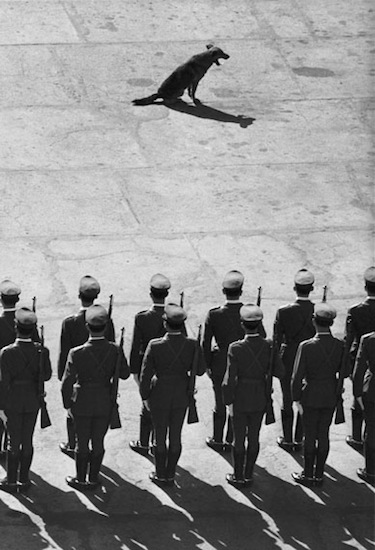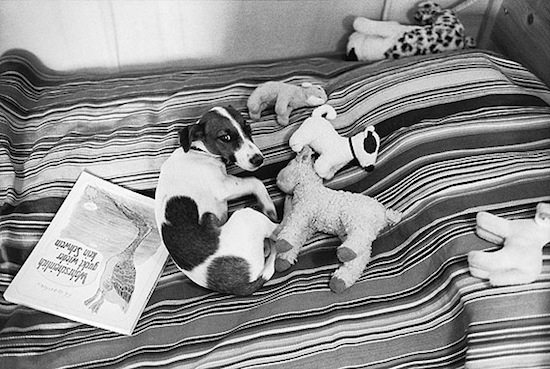
© Michael Ruetz "Official Reception", 1973 - Courtesy Johanna Breede PHOTOKUNST
With "The Family of Dog", Michael Ruetz has created, over the last 50 years, a unique body of photographic work. Superficially, these images might appear to pay tribute to the established forms of animal photography. But a second, more focused view shows that the reverse is true. Ruetz' pictures are as far removed from those of the animal specialists as they are from the images of classical painting. Some of the dogs in his photographs are shown with humans or with other animals, such as cows and cats, or with household implements or landscape features. For that reason, "The Family of Dog" is also a subtle and evocative portrayal of people and of social behaviour. This is a crucial difference between Ruetz’ pictures and those of Erwitt and Wegman, despite the shared aim of enabling animals ‑ especially dogs ‑ to retain a life of their own.

© Michael Ruetz, "Caught red-handed" 2003 - Courtesy Johanna Breede PHOTOKUNST
Ruetz' close familiarity with dogs and their ways is almost immediately apparent. The clearest indicator is the absence of provocative visual punchlines. Where these do occur, it is by chance; not by authorial contrivance, but in a matter-of-fact way, as the result of simple, but meticulous observation. In the lives of dogs, as of people, comic situations are unavoidable. Michael Ruetz’ way of observing the world is not only precise and careful; it also displays empathy. He does not project onto dogs the a priori notions that people generally foist upon them, for purposes, albeit unconscious, of symbolic subjugation. Instead, he waits and simply allows dogs to do the things that dogs do. Klaus Honnef

© Michael Ruetz 'Yin und Yang' 1976 - Courtesy Johanna Breede PHOTOKUNST
Photos et vignette © Michael Ruetz

